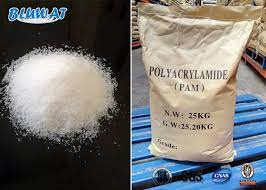•Polyelectrolyte
Polyelectrolytes are polymers that contain ionizable functional groups along their polymer chains. These functional groups dissociate in aqueous solutions, resulting in the presence of charged species called ions. Polyelectrolytes can be classified into two main categories: cationic polyelectrolytes (containing positively charged groups) and anionic polyelectrolytes (containing negatively charged groups).

Here are some key details about polyelectrolytes:
Structure:
Polyelectrolytes are typically large molecules composed of repeating units. The polymer chains can be linear or branched, and they often have a high molecular weight. The charged groups along the chain can be either evenly distributed or concentrated in specific regions.
Charge density:
Polyelectrolytes possess a high charge density due to the presence of ionizable groups. This high charge density gives rise to unique properties and behaviors in solution, such as high solubility, high viscosity, and strong interaction with ions and other charged species.
Ionization and dissociation:
When polyelectrolytes are dissolved in water or other polar solvents, the ionizable groups along the polymer chains dissociate, releasing charged ions. In the case of cationic polyelectrolytes, the positively charged groups (e.g., amino groups) dissociate to release positive ions (e.g., ammonium ions). Anionic polyelectrolytes, on the other hand, contain negatively charged groups (e.g., carboxylate groups) that dissociate to release negative ions (e.g., carboxylate ions).
Applications:
Polyelectrolytes have a wide range of applications across various fields. Some common applications include:
Water treatment: Polyelectrolytes are used as flocculants or coagulants to aid in the removal of suspended particles and pollutants from water during wastewater treatment and purification processes.
Drug delivery: Polyelectrolytes can be used to form nano- or micro-sized particles for drug encapsulation and controlled release. The charged nature of polyelectrolytes allows
Polyelectrolytes have diverse applications due to their unique properties and ability to interact with ions and other charged species. Here are some common uses of polyelectrolytes:

Water treatment:
Polyelectrolytes are widely employed in water and wastewater treatment processes. They are used as flocculants or coagulants to destabilize suspended particles and colloids, facilitating their agglomeration and settling. Polyelectrolytes help in the clarification, filtration, and separation of solids from water, improving its quality
Enhanced oil recovery (EOR):
In the petroleum industry, polyelectrolytes are used in EOR techniques to increase the efficiency of oil extraction. They can act as thickening agents, reducing the mobility of water and improving the sweep efficiency of injected fluids. Polyelectrolytes also aid in the displacement of oil from reservoirs, enhancing the recovery rate.
Paper and pulp industry:
Polyelectrolytes are utilized in the paper and pulp industry for several purposes. They act as retention aids, improving the retention of fine particles during the papermaking process. Polyelectrolytes also act as drainage aids, enhancing water drainage from the paper sheet. Additionally, they can be used as dry strength additives, increasing the strength and stiffness of paper products.
Personal care products:
Polyelectrolytes find applications in personal care products such as shampoos, conditioners, gels, and creams. They can provide viscosity and stability to these products, improving their texture and appearance. Polyelectrolytes are often used as thickening agents and rheology modifiers in cosmetic formulations.
Drug delivery systems:
Polyelectrolytes are utilized in the development of drug delivery systems, particularly in the form of nanoparticles or microparticles. These particles can encapsulate drugs and enable their controlled release, improving drug stability, bioavailability, and targeting to specific sites in the body. Polyelectrolyte complexes are also used for gene delivery and as scaffolds in tissue engineering.
Food and beverage industry:
Polyelectrolytes have applications in the food and beverage industry as additives for stabilization, emulsification, and thickening. They can improve the texture, appearance, and shelf life of food products, including sauces, dressings, dairy products, and beverages
Electrostatic self-assembly:
Polyelectrolytes can undergo electrostatic self-assembly with oppositely charged molecules or nanoparticles, forming multilayered coatings or films. This technique is used in various applications such as surface modification, corrosion protection, sensors, and membranes.

